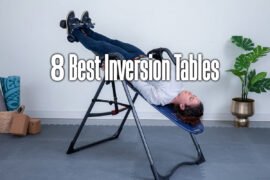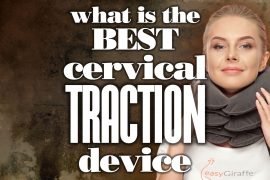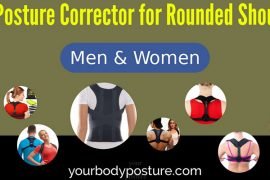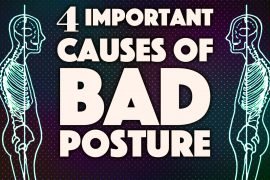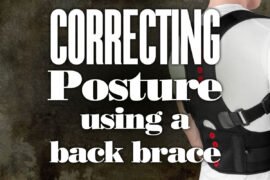Maintaining good posture is crucial for overall well-being and physical health. Poor posture can lead to musculoskeletal issues, including back pain, neck strain, and reduced lung capacity. As awareness of the importance of good posture increases, so does the market for posture correction solutions. Two popular options are the posture corrector shirt and the traditional posture corrector. In this article, we’ll explore the differences between these two products, their advantages and limitations, and ultimately determine which is better suited for improving posture and providing support.
Understanding Posture Correctors
Table of Contents
Before delving into the comparison, let’s briefly understand what posture correctors are and how they work. Posture correctors are devices designed to properly align the shoulders, spine, and neck. They aim to discourage slouching and facilitate muscle memory to encourage an upright posture over time. Both posture corrector shirts and traditional posture correctors share this common goal but adopt different approaches to achieve it.
Posture Corrector Shirt: A Closer Look
In recent years, posture-corrector shirts have gained popularity as a modern and innovative approach to improving posture and providing support to the upper body. These wearable garments combine traditional posture corrector benefits with regular clothing’s comfort and convenience. Let’s explore the various aspects of posture corrector shirts and why they have become a preferred choice for many individuals seeking to address posture-related issues.
Design and Construction
Posture corrector shirts are typically made from a blend of elastic and supportive materials, carefully designed to promote proper shoulders, spine, and neck alignment. The fabric used in these shirts is often breathable and moisture-wicking, enhancing comfort during extended wear. The ergonomic construction of posture corrector shirts ensures even pressure distribution, gently encouraging the body to assume a correct posture.
Discreetness and Convenience
One of the significant advantages of posture corrector shirts is their discreetness. Unlike traditional posture correctors, which may be bulkier and more visible when worn under clothing, posture corrector shirts are designed to be low-profile and inconspicuous. This feature allows users to wear them seamlessly beneath regular clothing without drawing unnecessary attention. The discreet nature of posture corrector shirts makes them suitable for various occasions, including work, social events, and workouts.
Posture Reminder Mechanisms
Many posture corrector shirts come equipped with posture reminder mechanisms to help users maintain proper posture throughout the day. These mechanisms often take the form of elastic bands or straps strategically placed to pull the shoulders back gently. When the wearer slouches or adopts poor posture, the tension in the bands reminds them to adjust their stance, encouraging them to maintain correct alignment. Over time, this may lead to improved muscle memory and better posture habits.
Comfort and Versatility
Comfort is a key factor in the effectiveness of any posture correction device. Posture corrector shirts are designed with comfort in mind, ensuring that users can wear them for extended periods without discomfort or irritation. The use of flexible materials and seamless construction minimizes the risk of chafing or rubbing against the skin.
Additionally, posture corrector shirts are versatile in their application. They can be worn during various activities, such as sitting at a desk, working out at the gym, or engaging in everyday tasks. Their adaptability allows users to address posture issues throughout their daily routines without impeding movement.
Targeted Support
While traditional posture correctors often provide more localized support to specific areas of the upper body, such as the shoulders and upper back, posture corrector shirts offer more comprehensive support. The design of these shirts allows them to address multiple aspects of posture simultaneously. They promote a holistic approach to posture correction and spinal alignment by encompassing the entire upper body.
Improving Core Strength
Posture corrector shirts can indirectly contribute to strengthening the core muscles. As the upper body is held in proper alignment, the core muscles are engaged to support and stabilize the spine. Over time, this engagement can improve core strength, further enhancing overall posture and reducing the likelihood of future posture issues.
Advantages of Posture Corrector Shirt
1. Enhanced Posture Awareness
One of the key posture corrector benefits of posture corrector shirts is their ability to promote posture awareness. Many of these shirts come with posture reminder mechanisms, such as elastic bands or straps, that gently pull the shoulders back when the wearer slouches. This gentle reminder encourages users to maintain proper posture and gradually develop better posture habits over time. Consistent use makes individuals more conscious of their posture, even when not wearing the shirt.
2. Even Pressure Distribution
Posture corrector shirts are designed to apply gentle and even pressure to the upper body, promoting proper alignment of the spine, shoulders, and neck. The compression design ensures that the support is evenly distributed across the targeted areas. This helps reduce muscle strain and tension while providing support to the muscles and ligaments involved in maintaining good posture.
3. Comfortable Wear
Comfort is a crucial factor in any posture correction device, and posture corrector shirts excel in this aspect. They are made from breathable and moisture-wicking materials, ensuring a comfortable wearing experience throughout the day. The flexibility of the fabric allows for natural movements, preventing chafing or discomfort often associated with rigid traditional posture correctors.
4. Versatility in Daily Activities
Posture corrector shirts are versatile and can be worn during daily activities. Whether sitting at a desk, engaging in physical exercises, or doing household chores, users can maintain proper posture while wearing the shirt. This adaptability allows individuals to address their posture concerns without hindering their daily routines.
5. Encourages Muscle Strengthening
Wearing a posture corrector shirt engages the muscles responsible for maintaining an upright posture. As the shirt gently pulls the shoulders back and encourages proper alignment, the core muscles, upper back muscles, and other supporting muscles are activated to stabilize the spine. Over time, this engagement can improve muscle strength and endurance, which further helps maintain good posture.
6. Prevents Fatigue and Pain
Poor posture can lead to muscle fatigue and discomfort, especially in the neck, shoulders, and upper back. By promoting better alignment, posture correctors shirts can help alleviate such muscle fatigue and reduce the risk of developing pain associated with poor posture. By providing support to the upper body, these shirts allow the muscles to relax and reduce strain during daily activities.
Limitations of Posture Corrector Shirt
1. Limited Targeted Support
While posture corrector shirts aim to provide overall support to the upper body, they may not offer as targeted or specific support as traditional posture correctors. Traditional posture correctors are often designed with adjustable straps or harnesses that can be customized to focus on particular areas of concern, such as the shoulders, upper back, or neck. In contrast, posture-corrector shirts provide more generalized support, which might not be optimal for individuals with specific postural issues.
2. Potential Fit and Sizing Issues
Posture corrector shirts come in various sizes, but finding the perfect fit for all body types can be challenging. Ill-fitting shirts may not provide the desired level of support or comfort, and they may even exacerbate discomfort or restrict movement. Ensuring the right size and fit is crucial to maximize the effectiveness of the posture corrector shirt.
3. May Not Be Suitable for Severe Cases
Posture corrector shirts are generally suitable for individuals with mild to moderate posture issues. However, posture-corrector shirts may not offer sufficient support in cases of severe spinal deformities or serious medical conditions affecting posture. Those with severe posture problems should seek advice from a healthcare professional for more appropriate and personalized solutions.
4. Dependency and Muscle Weakness
Prolonged and exclusive reliance on a posture corrector shirt may lead to muscle weakness over time. While the shirt supports the upper body, it does not actively engage and strengthen the muscles responsible for maintaining good posture. Continuous use without complementary exercises could lead to dependency, where the muscles become reliant on external support, potentially hindering natural postural improvements.
5. Discomfort and Chafing
Some individuals may experience discomfort or chafing during initial use or extended wear of a posture corrector shirt. The compression design, straps, or seams may cause irritation, especially for those with sensitive skin. Choosing a posture corrector shirt made from breathable and skin-friendly materials can help alleviate this issue.
Traditional Posture Corrector: An Established Approach
Traditional posture correctors have been utilized for many years as effective tools to address postural issues and promote better alignment of the shoulders, spine, and neck. Unlike posture corrector shirts, which are wearable garments, traditional posture correctors are standalone devices, often resembling braces or harnesses. Let’s take a closer look at the characteristics, advantages, and considerations associated with traditional posture correctors.
1. Design and Construction
Traditional posture correctors are typically made from a combination of durable materials, such as nylon, elastic bands, and adjustable straps. They are designed to wrap around the shoulders, upper back, and sometimes the waist to provide targeted support to the areas most affected by poor posture. The construction of traditional posture correctors is often more rigid compared to posture corrector shirts, allowing for greater control and adjustability.
2. Targeted Support
One of the primary advantages of traditional posture correctors is their ability to offer targeted support to specific areas of concern. By applying pressure to the shoulders and upper back, traditional posture correctors encourage the wearer to maintain an upright posture, thereby helping to realign the spine & relieve tension in the neck and shoulders.
3. Customizable Fit
Many traditional posture correctors come with adjustable straps, buckles, or hook-and-loop closures, allowing users to customize the fit according to their body shape and comfort preferences. This feature ensures a snug and secure fit, enhancing the effectiveness of the posture corrector while also accommodating various body sizes.
4. Ideal for Severe Posture Issues
Traditional posture correctors are particularly suitable for individuals with more severe postural abnormalities or specific medical conditions affecting posture. The targeted support they provide can be invaluable for those dealing with conditions such as kyphosis (excessive rounding of the upper back), lordosis (exaggerated inward curvature of the lower back), or scoliosis (sideways curvature of the spine).
5. Proven Effectiveness
Traditional posture correctors have been used for a long time and have proven effective in promoting better posture and supporting the upper body. Several users have reported positive outcomes in terms of improved alignment, reduced muscle strain, and diminished discomfort associated with poor posture.
Considerations
While traditional posture correctors offer targeted support and proven effectiveness, they do have some considerations that users should be aware of:
a. Bulkiness and Visibility: Traditional posture correctors may be more noticeable when worn under clothing due to their bulkier design. As such, they may not be as discreet as posture corrector shirts, especially under tight-fitting or thin garments.
b. Restricted Movements: Some traditional posture correctors may limit the wearer’s range of motion, especially during certain activities. It is essential to choose a posture corrector that allows for comfortable movement without hindering daily activities.
c. Gradual Muscle Weakness: Prolonged and exclusive use of traditional posture correctors may lead to muscle weakness over time. Similar to posture corrector shirts, excessive reliance on external support can hinder the natural development of muscle strength needed for maintaining good posture.
Advantages of Traditional Posture Corrector
1. Targeted Support
One of the primary advantages of traditional posture correctors is their ability to provide targeted support to specific areas of concern. They are designed to apply pressure and gentle force to the shoulders and upper back, promoting proper alignment of the spine and encouraging the wearer to maintain an upright posture. This targeted support is particularly beneficial for individuals with pronounced postural abnormalities or localized tension in the neck and shoulders.
2. Customizable Fit
Traditional posture correctors often come with adjustable straps, buckles, or hook-and-loop closures. This feature allows users to customize the fit according to their body shape and comfort preferences. The ability to adjust the posture corrector ensures a snug and secure fit, enhancing its effectiveness in supporting the upper body and promoting better posture.
3. Support for Severe Posture Issues
Traditional posture correctors are well-suited for individuals dealing with more severe postural abnormalities or specific medical conditions affecting posture. Conditions such as kyphosis, lordosis, scoliosis, and other spinal deformities can benefit from the targeted and rigid support provided by these devices.
4. Proven Effectiveness
Traditional posture correctors have a long history of use and have been proven effective in numerous cases. Several users have reported positive outcomes, such as improved posture, reduced muscle strain, and alleviation of discomfort associated with poor posture. Their effectiveness is well-established and supported by both medical professionals and users.
5. Holistic Postural Correction
Traditional posture correctors address posture issues directly, focusing on realigning the spine and shoulders. By encouraging better posture habits and providing support to the upper body, these devices play a significant role in promoting overall postural health.
6. Combines Well with Exercises
Traditional posture correctors can complement posture-specific exercises and physical therapy routines. By wearing the posture corrector during exercises, individuals can reinforce proper alignment and muscle engagement, aiding in the development of correct posture habits.
7. Increased Awareness
Wearing a traditional posture corrector can increase the wearer’s awareness of their posture throughout the day. The gentle pressure from the device serves as a reminder to maintain proper alignment, promoting a conscious effort to improve posture even when not wearing the corrector.
8. Versatility
Traditional posture correctors are available in various designs and styles, allowing users to select the one that best suits their preferences and needs. Some correctors focus on upper back and shoulder support, while others include waist and abdominal straps for more comprehensive support.
Limitations of Traditional Posture Corrector
1. Bulkiness and Visibility
One of the primary limitations of traditional posture correctors is their bulkier design compared to posture corrector shirts. They may be more noticeable and less discreet when worn under clothing, especially under tight-fitting or thin garments. This visibility can be a concern for individuals seeking a more inconspicuous posture correction solution.
2. Restricted Movements
Some traditional posture correctors may restrict the wearer’s range of motion during certain activities. The rigid design of these devices, while providing targeted support, may limit movements in the shoulders and upper back, potentially affecting daily activities and exercise routines.
3. Potential Discomfort
The rigid materials and design of traditional posture correctors can cause discomfort or irritation during initial use or prolonged wear. The pressure exerted on the shoulders and upper back might take some time for the body to adjust to, and some individuals may find the straps or buckles to be bothersome.
4. Gradual Muscle Weakness
Prolonged and exclusive use of traditional posture correctors may lead to muscle weakness over time. Similar to other external support devices, excessive reliance on a traditional posture corrector can potentially hinder the natural development of muscle strength needed for maintaining good posture.
5. Inconsistent Usage
Some individuals may find it challenging to use traditional posture correctors consistently. Putting on and adjusting the corrector may require time and effort, leading to occasional neglect or forgetfulness in wearing it regularly.
6. Sizing and Fit Issues
While traditional posture correctors offer customizable fit through adjustable straps, finding the perfect fit for all body types can be challenging. Ill-fitting posture correctors may not provide the desired level of support or may cause discomfort during wear.
7. Not Suitable for All Posture Issues
Traditional posture correctors effectively provide targeted support to the shoulders and upper back. However, they may not be suitable for addressing all types of postural issues, especially those that require more generalized support or affect other areas of the body.
8. Dependency Concerns
Similar to other posture correction devices, there is a risk of dependency on traditional posture correctors. Over-reliance on external support can hinder natural postural improvements and weaken the muscles responsible for maintaining good posture.
Which Is Better: Posture Corrector Shirt or Traditional Posture Corrector?
The answer to which type of posture correctors is better depends on various factors, including the individual’s specific needs, the severity of their posture issues, and personal preferences.
Posture Corrector Shirt Recommendation:
For individuals with mild to moderate posture issues who are looking for a comfortable and discreet option, a posture corrector shirt could be the better choice. It provides gentle support, encourages better posture habits, and can be simply integrated into daily activities without hindering movement.
Traditional Posture Corrector Recommendation:
A traditional posture corrector may be the preferred option for individuals with more severe posture problems or those seeking targeted support and adjustability. These braces can offer a higher level of support and are adjustable to accommodate various body shapes and sizes.
FAQs
Q1. What is the main difference between a posture corrector shirt and a traditional posture corrector?
The main difference lies in their functionality and design. A posture corrector shirt is a wearable garment that provides even pressure distribution to the upper body and often comes with posture reminder mechanisms. On the other hand, a traditional posture corrector is a standalone device designed to target specific areas like the shoulders and upper back for more pronounced support.
Q2. Which option is more discreet and comfortable to wear throughout the day?
Posture corrector shirts are generally more discreet and comfortable to wear under regular clothing due to their low-profile design and use of breathable, flexible fabrics. Traditional posture correctors may be bulkier and less inconspicuous, which can impact comfort during extended wear.
Q3. Are posture corrector shirts effective for severe posture issues?
Posture corrector shirts are more suitable for individuals with mild to moderate posture issues, as they offer gentle support and encourage better posture habits. Traditional posture correctors with targeted support may be more effective for severe posture problems or specific medical conditions affecting posture.
Q4. Can traditional posture correctors be worn during exercises and physical activities?
Yes, many traditional posture correctors are designed to be worn during exercises and physical activities. It provides additional support and reinforcement for proper alignment and muscle engagement.
Q5. Should I consult a healthcare professional before choosing between the two options?
Yes, consulting a healthcare professional or a posture specialist is recommended before selecting a posture corrector. They can assess your individual postural needs and help determine whether a posture corrector shirt or a traditional posture corrector is more suitable for your specific condition and lifestyle.
Conclusion
In conclusion, both posture corrector shirts and traditional posture correctors serve the vital purpose of improving posture and supporting the upper body. The choice between the two ultimately depends on individual needs, comfort preferences, and the level of support required. It is important to consult with a healthcare professional before choosing a posture corrector to ensure it is suitable for your specific condition.
Remember that while these devices can be helpful, they should complement an overall posture improvement plan that includes regular exercise, stretching, and ergonomic adjustments to daily activities. Incorporating these measures into your lifestyle will promote long-term posture health and reduce reliance on external support. Always prioritize your comfort, and select the option that best fits your lifestyle and posture needs for a healthier, more aligned future.
For those interested in exploring the best posture corrector shirts available in 2024, I recommend checking out my comprehensive article titled “Best Posture Corrector Shirts For 2024.” In this article, I have carefully reviewed and curated a list of top-performing posture corrector shirts to help you make an informed decision based on your individual needs and preferences. To access the article, please click here. By incorporating these advanced posture corrector shirts into your posture improvement plan, you can take a proactive step towards achieving a healthier and more aligned future.


